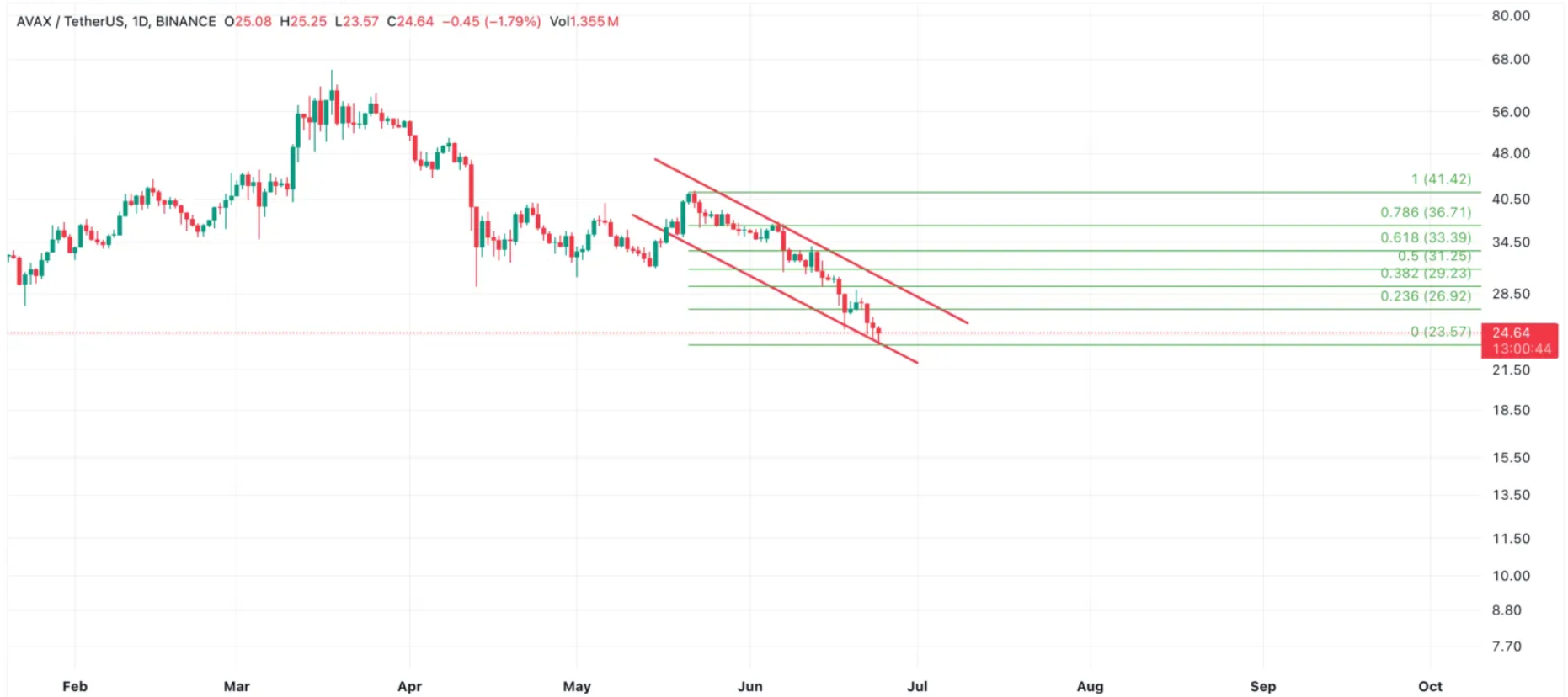BTC continues to plunge to new lows. The price has dropped below $60,000. It is now at $60,200. Altcoins have seen even more declines, with almost all turning red. So, what is next for Avalanche (AVAX)? What levels can investors expect in the coming days?
Avalanche (AVAX)
Since reaching the year’s high of $60.42 on March 14, AVAX has been declining. While SOL Coin attempted new upward movements targeting $256, AVAX remained weak. The primary reason is the excess supply triggered by double-digit inflation. Just last month, AVAX’s price dropped by 35%.
At the time of writing, AVAX continues to find buyers below $25, amidst a tough battle. More than 52% of investors are already expecting losses. If BTC does not recover, the fact that more than half of the investors are forced to bear losses could trigger more severe sales.
Weekly losses exceeded 20%, and despite increased network activity in the last 7 days, the price has seen such a decline. The number of new addresses conducting transactions on the AVAX network increased by 88%, while the overall increase in new addresses was 59%.
Notably, an increase in the number of daily active and new addresses of an asset can mean two things. Either investors are coming to the blockchain for more purchases, or the opposite. Looking at the general market sentiment, the latter seems more likely.
AVAX Price Prediction
The decline in May caused the price to show weak performance in a descending channel. This situation brings consistent sales in the price. A descending channel is a bearish sign. The upper line of the channel is at $46.9, and the base is at $22.04. While the price is trading around $24, the potential to test or break the base support downward is strengthening.

If sales continue, sales will continue down to $18.5 after $23.57 and $22.04. A rebound to $26.9 could be seen for a recovery. For now, no matter how much we talk about AVAX, the thing that will determine the price direction is the situation of Bitcoin. If BTC falls to $58,000 and below, we could see altcoins hitting points lower than last year’s lows.

 Türkçe
Türkçe Español
Español









